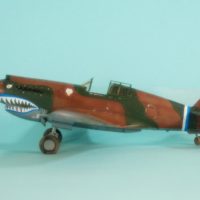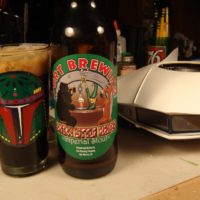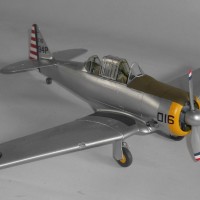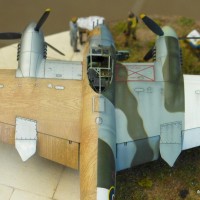Paints and glues
Hi all. Got questions for you all. I have been modeling since 2002. Never used an airbrush on my models; Although, I have tested one out at a local club. I am still using cans. I have purchased a reasonable cheap AB, to test out. I have yet to open up the packaging rapper.
Anyway, I just wanted to know how many here still paint with a rattle can?
Another question. What glues do you guys used that are very good in terms of their bond and especially, has less foul odor? I heard Zap, was a brand that did not have a bad odor and is effective. How true is this? There are also several types that Zap offers. What are their differences? I think there is a green and orange color bottle that they offer.
I am about to start on the Scania 141, that I got from Martin, here on this site for model of the month.





Hi Charles,
I'm a late AB adopter myself, bought my first Badger 100 just 4 years ago and still learn with every paintjob. Large surfaces and primers I apply with cans too, most of the time the kind used in automotive bodywork. As for glues, I ceased using the readily available Revell Contacta and now use Tamiya extra thin and superglue almost exclusively. For "glasswork" I use canopy glue which sets transparent and does not dissolve the plastic creating white traces.
Extra thin smells a bit but not as much as other glue types I find. I admire your work, Michel.
Thank you Michael for your reply. I appreciate it. Do you have a name of the glue you use for gluing windows a d canopies, please?
I have the thin Tamiya brand but I should think there should be a thicker glue for gluing thicker parts, or am I wrong for thinking that? BTW, I also using the readily available Revell brand.
https://www.mcronse.eu/zappt56-formula-560-canopy-glue-59ml-zap-p-45960.html?gclid=EAIaIQobChMImtbs7fqE3QIVSdbACh3yGglGEAQYASABEgJAWvD_BwE&utm_campaign=Googleshoppingbenl&utm_content=products&utm_medium=BaseFeed&utm_source=Googleshoppingbenl&osCsid=969b7186492008bd2e685440413fa005
I'm not sure. I stepped down from Revell because this glue had the tendency to 'thread' and these spider wires went everywhere so you got fingerprints in places where they don't belong
I got quite skilled in using superglue and extra thin only. Usually, I first fix larger parts using small dots of superglue applied with a toothpick. After that is set, I fill the joint with extra thin. The nice thing about the latter is that it fill s the seam perfectly through capillar action. This means glue gets virtually everywhere in the joint, implying a strong fixation in the end.
Thank you kindly for that.
Welcome Charles!
That link of the zap canopy glue looks like ordinary pva. I will definitely try the pva on my present truck build.
I've been painting with a Paasche-H since 1971 and am still learning new things. It's an art.
As far as glues are concerned, Tamiya Extra Thin gets no "stink complaints" from SWMBO's super sniffer.
Hi Charles,
I'm a longtime airbrush user but still use can paints but not directly from the can. I simply love the consistency and the durability of Tamiya can paints. I decant the paints into bottles and use AB to paint them on - I like the control and more finer spray performance of the AB. For example for "high-speed silver" the Tamiya TS-17 is great and that paint is quite forgivable for a silver.
Interestingly I mainly used CA from the beginning and recently tudned to other types of glues. I like experimenting so I use and try lot of stuffs. Thin cement is great as mentioned earlier; I use Tamiya and a local brand that is practically an agressive solvent very similar to Micro Weld but cheaper. For polystirol this kind of stuff is the best (I strachbuild a lot and thin cement is very useful for small parts also). I still use Revell Contacta Professional and UHU Plast Special (the two are nearly identical; the UHU a bit thinner I think). They thicker than Tamiya extra thin cement gives more control but You have to be careful with them as Michel mentioned: nasty melted fingertips alert! For CA I tried some brands but my favourite is still the Loctite Super Attak - the normal and the gel also. I use Tesa and UHU CA's also as they are considerably thinner than Loctite. A hint: You can make your desired density CA adding debonder to a thicker brand. For canopies and transparencies I use Microscale Clear or ordinary wood glue (white glue - the grat thing is that You can thin and clean up it using water) or for special cases (resin kits, acetate parts) HYPO GS which is a watchmaker's glue for glass. I can' comment on smell as it not really a concern for me...
Thank you so much. Great info I can use. But the wood glue is new to me. Really, it works to glue windscreens? Never tried it.
I suspect lot of special modeling products are just rebadged ordinary DIY stuffs. I have some so called "clear" glues (clearfix, super clear etc.) and they are in reality very very similar in consistency and behaviour to the ordinary wood glue (or in old "Verlinden way" term "white glue"). Give it a try, it's cheap, handy and surprisingly strong and flexible. You can even fill in minor gaps around transparent parts with it.
Thank you. Will do.
Not at all It was a great idea to make this topic. Interesting to see what others use - and pick up tricks from them
It was a great idea to make this topic. Interesting to see what others use - and pick up tricks from them 
Yes, you can just go to the local store and buy "school glue" or Elmer's Glue, any of the white glues. The fill gaps and dry invisible, which makes it easy not to have those annoying gaps with a windscreen. And if you happen to get a schmear on the clear part you can scrape it off with a fingernail. Been using these glues for 45+ years, thought everyone knew this "secret."
Like Michel, I’m a Tamiya ‘extra thin man’ (the name of the glue, not a boast about my physique, which is not extra thin). With the Extra thin there’s an initial leap of faith needed (which took me a while to get over) that less is more. Whereas most glues stick, the Tamiya ET ‘welds’ or melts the two surfaces of the plastic together (I know most will know this but it was a real epiphany to me on learning this pretty recently). Hence, you get a greater bond even than CA glue (certainly with plastic).
I’ve used Zap for Photo Etch work and it’s great (pink label) but now use Flexy 5k CA for metal work - it is superb and I highly recommend it, especially for ship builders who do a lot of railing work.
I really like Michel’s idea of using a hybrid approach for larger work, will have to try that. I use generic wood glue for ‘glass’ work as it dries clear and doesn’t cloud the clear plastic.
Thanks David. Really did not know wood glue was so popular for windscreens and canopies. I must give it try, especially for me who do bigger truck screens.
The canopy glue, like the wood glue is basically PVA, so it dries clear. I use Microscale Kristal Klear, but you can use any decent quality PVA glue
I've stepped back from the hobby (for lack of interest any longer - but that's another story). At any rate, I tried an airbrush a few years ago and found it too "labor intensive", (basically being lazy I suppose). All that cleaning, changing colors, disassembly, reassembly, etc.
I'd found various methods of achieving what I wanted using rattle cans exclusively. As for glue, I use(d) Tamiya thin AND thick cement - and even the "old" Testors tube glue sometimes in certain situations. I found the need for 'super glue' in rare instances (I didn't like it...it didn't seem to bond the way I'd hoped). It's all trial and error and personal preferences.
Thank you for your experiences. I will take it into consideration.
I've always used rattle cans , to late in the game[for me] to change, although it some times limits the selection of colours to chose from. I generally use MM liquid cement and their canopy glue. I was using Squadron or Tamiya white putty to fill gaps but I've find myself using Bondo red glazing putty more often, it seems easier to sand.
I hear you on the AB compromises. It's exactly that for me. One of the major plus for me with an AB, is the fact that you can control the amount of paint that gets passed out of the nozzle. You can't do the same with a rattle can. If you don't spray too close to the model but there is so much over spray. AB has better control. But it is the constant cleaning between every single color you use that deters me.
Like the other guys I have a wide and varied arsenal of paints and adhesives,this is what I use :
Primer- any good make automotive grey primer unless I am applying Yellow/orange which will require a white primer
Paints- applied mostly with airbrush I use Tamiya acrylics or Humbrol enamels though the Enamels take much longer to dry, I also use rattle cans for colours like silver or if my subject is one colour all over and a good match is available.
Adhesives- Any good polystyrene adhesive will do for long seams as these can be squeezed together to let the excess fill any imperfections and then rub down when dry, I use Gator glue on clear parts but I am pretty sure ordinary PVA is the same stuff I also use a Humbrol clear parts adhesive which is pretty good. And I use superglue for tricky bits which I need to dry quickly.
Filler - I use Squadron white filler and have no problems with it.
Hope this helps.
Excellent and useful topic Charles! I've already learned a lot from all the previous posts!
I don't have an airbrush. Only similar tool I have is that Humbrol kind of airbrush, but to be honest I've only used it a couple of times, if that much, a long time ago.
The reason is probably because when I was really in the hobby, decades ago, 99% of my builds were either 1/72 scale aircraft, or 1/35 scale military vehicles and figures, and a couple of dioramas. For me, on these scales, I guess I prefer to work with paint brushes.
I've never used cans (not for modeling anyway) .
Same thing for the 120mm figures I've done, as well as the only 200mm figure I did. Paint brushes. How would I paint the eyes, or even the faces, as well as all other small details on those figures, with an airbrush, or even a can?...
Now, I remember using at least once this Humbrol kind of airbrush for some parts of a Bf 109E on 1/32 scale. And when I'll resume that building obviously I intend to use it again. But that is only for the exterior of the fuselage, as all the inside parts, engine, cockpit, all small parts, I always use paint brushes.
Right now I'm building a 1/24 scale old Rolls-Royce, and so far I've only worked on the smaller parts, so have done all this with paint brushes. Now, when I'll start painting the main body, then yes, I intend to once again use this kind of airbrush from Humbrol.
Glues: as others have mentioned before, I've also used a lot of wood glue for my dioramas (1/35, most of them) .
For plastic aircraft, military vehicles, etc, I usually use a good glue for plastic, and I've used a few different ones. Right now I'm using that Revell Contacta that Michael mentions above. But after reading his posts I'm considering that Tamiya Extra Thin, I'll give it a try.
(Btw, Michael, I see there are at least two different Tamiya Extra Thin glues, one "Quick-Setting", and the other just Extra Thin. Which one would you recommend? Thanks!)
For my 120mm figures (and that is also what I'll use when starting doing some Busts), as they are made of resin, I do use a superglue/CA. Right now I have one made by Loctite, just not the Super Atttack one mentioned by Gábor. But it's still one of Loctite superglues. In the past I've used others, including ones that come with a little brush, can't remember the brand.
I didn't know about the ZAP Formula 560 canopy glue that Michael mentions above! Excellent, thanks a lot for the tip! I'll try to find that one, as it seems to be the ideal glue for aicraft cockpits indeed!
As for my paints, I guess I'm an old school guy, so I still use the old Humbrol enamel paints. Have tested other brands, Testors, Revell, etc, but 99% of my stock is made of Humbrol enamel paints. Have only used Tamiya acrylics once so far. Guess that I'll have to adapt to these once I start doing some Busts (also made in resin), as it is the type of paints that apparently all Busts modelers use nowadays.
Cheers!
Dolf
Charles, It sounds like the glue issue has been covered here. As for ABs, I started out with a Badger 350. It worked well and was not expensive at all. I then move up to a Badger 200 and loved it. The single most important purchase I ever made. Its simple to use, easy to clean and tough to screw up. I have sent it back to Badger a couple of times and each time it came back as good as new, with little or no charge. A great tool and a great company.
The single action 200 is very easy to use and I still use it after 20 years. It paints great ! The hardest thing to master is thinning your paints. Enamels feed fairly well, but acrylics can be a problem due to their quick drying time. However with right thinning and maybe using a paint retarder to slow down the drying, it works great. Believe me, once you get confident with an AB it will revolutionize your model building !
Thank you kindly for your input. I am well adviced.
Hello Charles,
In response to your question (and all contributors).
Wood glue is used by me not only for windows (Canopy's-Truck windows), but for a lot of tiny parts where it could become necessary to correct them.
All my wheels AC+ vehicles) are connected with PVA. A drop of water on the axle and within minutes you can correct the angle or remove it completely in case of emergency.
Bombs, rockets all connected with PVA. Excess PVA is removed with a wet brush, so you can deliver a clean work area. It also works great, when you have to add parts to already painted area's. Correction possible for a long time (keep it wet) and no excess and no damage to your paint.
PVA comes in quick and slow drying jars.
Regards, Dirk
Dirk, thank you so much for your response. I did not know this. It sounds logical but was not aware of the longivity with plastic parts using wood glue. I will definitely be giving this method a try. Appreciate the knowledge I am getting from this thread.
Thank you kindly for your input. I am well adviced.